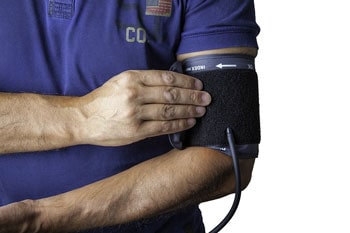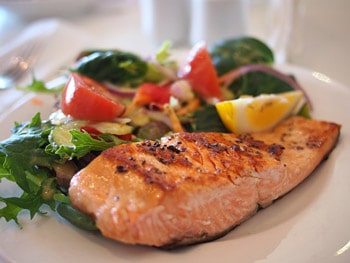
According to the CDC, 75 million Americans have high blood pressure. That’s one in three, so chances are you know someone suffering from what the American Heart Association calls “the silent killer”. Most people manage their high blood pressure by taking a pill every day, but what if there was a better way to maintain healthy blood pressure.
When it comes to being healthy, you might immediately think about your weight and exercise routine. But a large part of being healthy is ensuring our bodies are able to perform necessary functions effectively and efficiently.
This includes things we usually don’t think about until there’s a problem, like your blood pressure.
We’ve all had our blood pressure taken at one point or another. The doctor or nurse puts the band around your arm, pumps the little ball and then reads off some numbers. But do you really know what those numbers are measuring?
Your tissues and organs need oxygenated blood to survive and it gets there through your veins, arteries and capillaries. Your blood pressure is the amount of force your blood is putting on those pathways. The two numbers represent your “systolic” pressure and your “diastolic” pressure.
Systolic – The first number you hear at the doctor’s office measures how hard your blood is pushing against your artery walls when your heart is pumping it out.
Diastolic – The second number is how hard your blood is pushing between beats, when your heart is resting.
When you have high blood pressure it means your blood is pushing too hard against the walls of your arteries all the time. This increases the workload on your heart and circulatory system, forcing them to work harder while also being less effective.
High blood pressure can cause a wide variety of health complications and they aren’t just limited to your heart.

Heart Attack – High blood pressure causes damage to you arteries that can keep blood from getting to your heart, significantly raising your risk of heart attack.
Heart Failure – All of the overtime your heart is putting in can cause it to become enlarged. In this case, bigger isn’t better. An enlarged heart can fail to supply blood to the body and stop working all together.
Vision Loss – High blood pressure can strain and damage the delicate blood vessels in your eyes which leads to vision loss.
Stroke – Your brain requires blood flow just like any other part of your body and high blood pressure messes that up. It causes the blood vessels in your brain to clog and/or burst more easily, causing a stroke.
Kidney Disease & Failure – Your kidneys filter waste out of your blood and high blood pressure damages the arteries the feed that system. When your kidneys can’t do their job anymore, they stop working.
Other Health Risks – High blood pressure can also cause other conditions such as angina and peripheral artery disease. It can also lead to sexual dysfunction in both men and women.
The simple answer to this question is everyone.
There are hereditary and physical risks like your family history, age, gender and race that you really can’t do anything about. However, there are lifestyle choices that lead to high blood pressure that you do have control over.
This is why it is so important to monitor your blood pressure for any changes that signify it is climbing. Once you develop high blood pressure you’re stuck with it. This condition is not curable, but it can be managed once it develops.
Millions of Americans take high blood pressure medication, it’s one of the most widely prescribed prescriptions on the market. But there may be a way to help manage your high blood pressure without prescriptions, insurance copays, or trips to the pharmacy.
A study performed at the University of Western Australia found that getting up and moving for just 30 minutes a day is a simple way to avoid medication and help lower your blood pressure.

Researchers divided the 67 participants into three groups, each with a different 8-hour plan. All research was performed in a lab and participants ate the same meals leading up to and during the study to eliminate as many variables as possible.
The first group just sat for 8 hours, they did not perform any type of activity.
The second group sat for one hour, then did 30 minutes of moderate exercise on a treadmill, and then stayed sitting for the remaining 6.5 hours.
The third group did one hour of sitting, then 30 minutes on the treadmill. The remaining 6.5 hours consisted of getting up every thirty minutes and walking for 3 minutes before sitting back down.
Researchers measured blood pressure and heart rate throughout the 8 hours and found some astounding results.
Systolic blood pressure was significantly reduced in individuals that performed the 30 minutes of moderate activity. To break it down even further, men saw the biggest change with just the 30 minutes of exercise in the morning. Women saw the largest benefit from the group three regimen, combining the morning exercise with breaks.
“For both men and women, the magnitude of reduction of systolic blood pressure following exercise and breaks in sitting approached what might be expected from medication,” says Michael Wheeler, lead author of the study.
Since lifestyle choices can help you manage and lower your blood pressure, it’s important to know what you need to be doing.

Exercise – We already know exercise is good for heart health and helps prevent high blood pressure, but it’s more than that. The above study shows that exercise is beneficial for lowering blood pressure even after you have it.
Healthy Diet – Obviously healthy eating leads to a healthier you, but when it comes to blood pressure you want to really watch your sodium intake. Also, stay away from saturated and Trans fats to help maintain healthy blood pressure.
Weight – Individuals that are overweight or obese are at a higher risk of high blood pressure. Extra weight places more strain on your body, specifically your heart and circulatory system.
Other Factors – High cholesterol and diabetes raise your chances of developing or worsening blood pressure. Smoking, tobacco use and alcohol are also shown to raise your blood pressure, in addition to other health risks.
When it comes to your blood pressure, knowledge is power. Know your numbers and monitor changes in your blood pressure, but don’t wait until there’s a problem. Get your exercise and remember the tips from above. Your heart will thank you.
Sources:
High Blood Pressure. Centers for Disease Control and Prevention: 2019
Why High Blood Pressure Is A “Silent Killer”. American Heart Association: 2017
Lower Blood Pressure With 30-Minute Workout Instead of Drugs: Lynn Allison; 2019